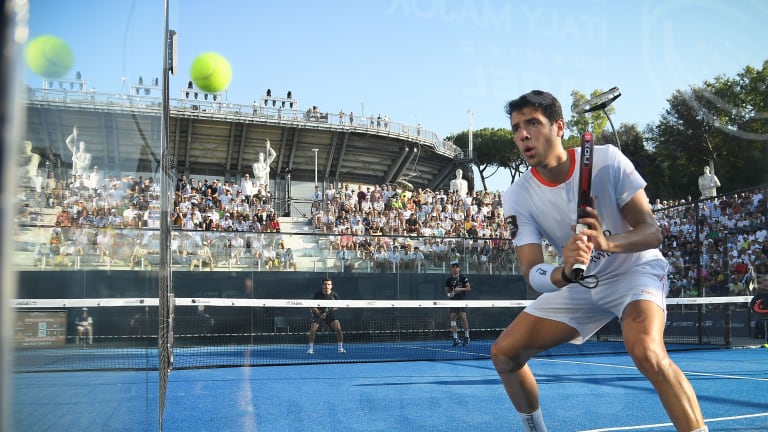NEW YORK—“BOOM!”
That’s the surprising sound that comes off my perforated paddle as I hit a ball with it for the first time. I’m expecting a lighter noise, something like the click you get in ping-pong, or the echoey pop we know—and don’t always love—from pickleball. This is a more solid sound, and so is the feeling in my arm when the paddle and ball make contact.
It’s a muggy summer morning in Manhattan, and I’m having my first hands-on experience with padel, the latest racquet-sport craze to—possibly, potentially, hopefully—begin sweeping the United States. Up until a minute ago, I didn’t even know how to say it. I had always said puh-DEL; the game was invented in Mexico and is played mostly in Spain, so I assumed it was pronounced with a different emphasis than in English. But according to my instructor, Pablo, a former professional player from Spain, “padel” is pronounced just like “paddle.”
However you say it, the first thing you learn about this sport is that it’s a workout.
Pablo feeds me balls rapid-fire. They’re the same size and color as tennis balls, but slightly lighter. Ground strokes are shorter than in tennis, and volleys a bit longer. In either case, there’s not much time for an elaborate backswing. A padel court is 12 feet shorter, lengthwise, than a tennis court (66 to 78), and the ball is constantly ricocheting off the glass walls that surround it. Much of the time, all four players are at the net trading high-speed volleys.
“It’s explosive,” Pablo says, as I sit down, huffing and puffing.
